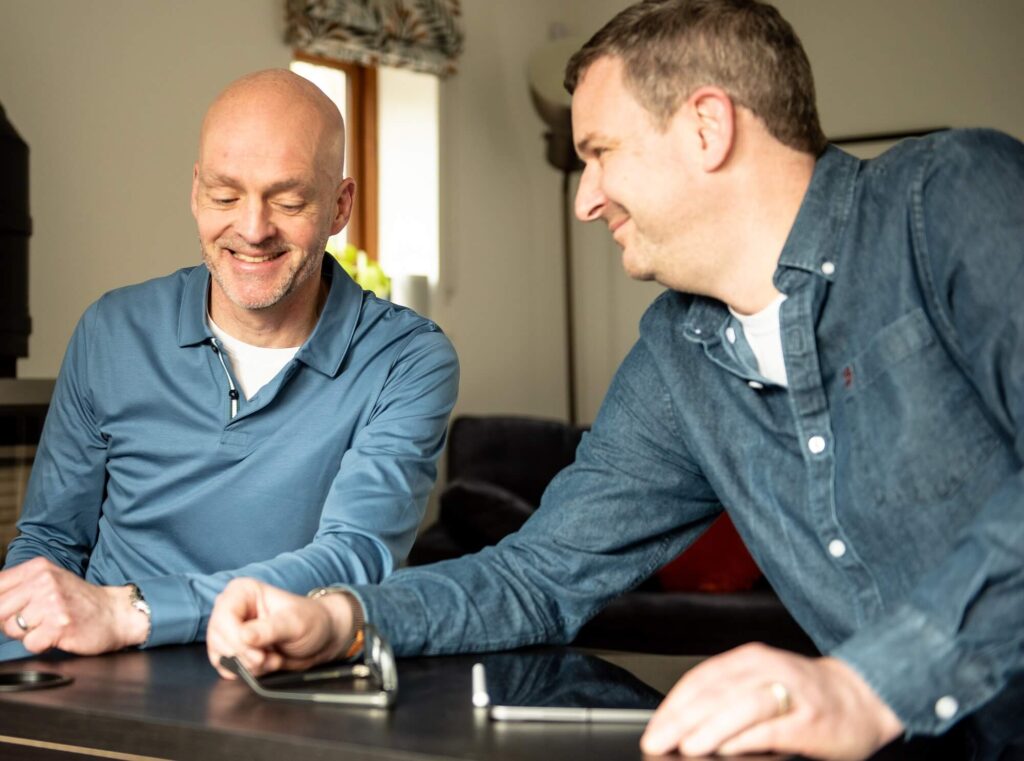A while back, we had the opportunity to meet an insightful individual named Mark Smith, who shed light on some of the less frequently discussed yet critical metrics in marketing beyond the usual suspects like conversions, ROI, and Customer Lifetime Value.

Intrigued by his perspective, we decided to delve deeper and explore one such metric with him: Mental Availability. Often overshadowed by more conventional metrics, Mental Availability is a potent force in the marketing world, crucial for understanding and influencing consumer behaviour. Join us as we unpack the concept of Mental Availability, its measurement, significance, and its impact on brand positioning and consumer choice in the competitive market landscape.

To give you a closer look at this topic and share more of Mark’s invaluable insights, we have conducted a Q/A Interview with Mark, and you can see it below.
Mental Availability – Q&A:
Mark, could you demystify the concept of Mental Availability in marketing for us?
Sure, Brands Grow by increasing both Mental and Physical Availability. Think: ‘Easy to Think of (Mental Availability)’ and Easy to Buy (Physical Availability)’. The architects of this are the wonderful people at Ehrenberg Bass Institute and this dates back to the seminal work by Byron Sharp back in 2010 with the launch of his book: How Brands Grow. It would be a brave marketer not to have this on their bookshelf.
The reason why this is so celebrated in the marketing world is because there is a correlation between ‘Mental Market Share’ (a score which calculates the likelihood of being thought of in buying situations relative to the competitive set) and your Sales Market Share. For organisations that have something to sell, Sales Market Share is a measure that will be reported at every board meeting and so now we are starting to see the score of ‘Mental Market Share’ being measured as a way of knowing how marketing is working.

What methodologies or tools do you employ to accurately measure mental availability?
Mental Availability is underpinned by Category Entry Points. There are three main measures that need to be measured:
Mental Market Share: As mentioned above, it is a score which calculates the likelihood of being thought of in buying situations relative to the competitive set.
Mental Penetration: How many of the people that buy the category (the important distinction between buyer and consumer can be found here) are able to link your brand to a ‘buying situation’. We have brands in our database where 50% of those people who buy a category, say bread, cannot link a well-known bread brand to a single buying situation. This should therefore be a focus for that brand to drive a buying situation into the minds of those people as a priority.
Network Size: Of those people who can make at least one link, how many can they make on average? Brands that are hitting the sweet spot fall between 5 and 8. The largest brand in our database (c.240 brands) scores an impressive 10.2. You’ll know this brand; they do a phenomenal warm sausage roll and can be found in almost every town in the United Kingdom.
If you are interested in a video that explains a Mental Availability Assessment then Partner at SmilingCFO (Martin Coyle) provides a more in-depth analysis here.
Could you provide examples of key performance indicators (KPIs) that businesses can monitor to assess mental availability?
If I were to pick one measure for a company to focus on it would be Mental Market Share and measure this against your Sales Market Share. You are looking for a correlation between the two. If there is a deviation from this, then this could mean that either your marketing is doing the heavy lifting to drive sales or your Physical Availability is doing all the hard work. Knowing this will mean you invest in the right areas.
At what stage of growth should businesses start prioritising mental availability, and does this focus vary by company size?
A brand should always be focused on this. But first things first—just ask the question to those people who buy your category: How many of these buyers can link your brand to the category? Go and tell your CFO that only 35% of the people who buy your category can link your brand to the category and see how long it takes her to ask you the follow-up question of ‘Well, how quickly can we get the other 65% to know we exist?’
You need to know this number before you move forward.

You’ve once mentioned Category Entry Points (CEPs). Could you elaborate on what CEPs are and their significance in building mental availability?
Category Entry Points underpin Mental Availability. Think of it this way, and we’ll use laundry detergent as the example here. Say you have spilt some red wine on your crisp white shirt – you have now started the buying situation. You now search, in your mind, for a Category Entry Point that ‘removes stubborn stains’ and your mind will surface a number of brands that will do the job. Your job, as the brand team, is to make sure your brand ‘pop’s’ when this scenario happens.
How do you assist businesses in leveraging Mental Availability / Category Entry Points to enhance their market position?
We take a very different approach to prospecting. Normally companies in my position will get in contact with a prospect and attempt to convince them to a meeting in the hope that this meeting may yield a problem for the agency to go away and work on. My business partner is an ex-CMO and COO of a global brewer and so this would drive him nuts and so when we set the business up we wanted to do it differently which is why we have spent about 5000 hours building our Mental Availability model and testing this with about 240 brands. This allows us to call up the CMOs and tell them something about their brand that they probably did not know before the call started and this puts us in an interesting position where we are in help mode before the first 60 seconds of the call has finished.

So that’s how we prospect and to help businesses with Mental Availability we have a couple of routes:
- Our consultancy arm where we carry out the research and then provide the data and the hypotheses for what the brand needs to do to grow.
- We offer training. We identified that not every brand team would understand exactly what Mental Availability was so we set out to design some courses to help brand teams with this so they can gain a competitive advantage.
- We also recommend watching the Mental Availability ‘explainer’ video from Mark: here and visiting his page https://smilingcfo.co.uk/.
In our engaging conversation with Mark, he took us on a deep dive into the often underappreciated realm of mental availability in marketing. Mark introduced us to the idea of Category Entry Points (CEPs) with such warmth and clarity, painting scenarios that instantly felt familiar—like reaching for a refreshing drink on a blistering summer day or selecting soft drinks for a casual barbecue. Through examples involving well-known brands like Coca-Cola, Red-bull, Sprite, and FuzeTea, he showed us how these moments are opportunities for brands to become intertwined with our daily lives and memories.

He explained how it’s about being the first name that pops into your mind when you’re ready to make a purchase, giving brands a leg-up in the fierce market competition. This high mental availability, Mark noted, doesn’t just boost market share and revenue; it’s the foundation of building lasting relationships with consumers—cultivating loyalty and trust that weather the storms of market changes and competitive pressures.
Mental Availability – Conclusion
Wrapping up our conversation, it was clear that mental availability is far more than a metric; it’s a lens through which to view the intricate dance between consumer behaviour and brand strategy. We’re incredibly thankful to Mark for not just sharing his knowledge but for reminding us of the human connections at the heart of marketing. His insights not only illuminated the path to business success but also highlighted the personal touches that make brands resonate deeply with consumers.

Leave a Reply